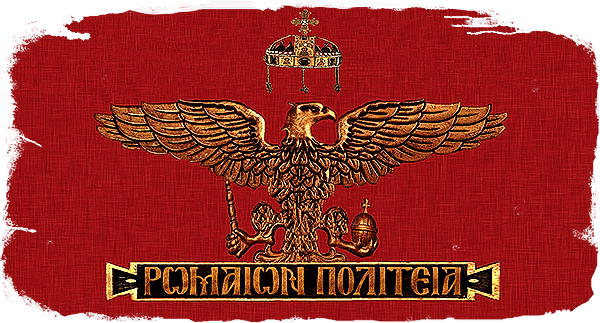
The Roman Empire
![]()
If we had to give a title in our presentation of the Imperial (Tagmatic) Forces of the Medieval Roman Empire we had no other choice than this one. Nothing is certain. Alexander the Great felt that he had no Homer like historian with him to write down with details his victories and his achievements. Exactly the same “problem” had the Roman Emperors of the middle ages. The problem was/is that those that wrote those“stories” describing events of their times did not add details because a) they wrote to their modern, to them, readers and more details were unnecessary or, b) they were nothing more than “story” writers and they had no expertise in describing details that could allow readers to fully understand how the soldiers of the time we describe, looked like. What we have in reality is a large number of scripts that lack details. But sources for “reconstructing” those warriors do exist and they are nothing else than the military manuals that were written by military people, in the time we describe here in this mod. Such manuals are 1:Leonis Imperatoris Tactica by Emperor Leon VI the wise, 2: Stategicon by anonymous writer (Sylloge Tacticorum – anonymous), 3: Praecepta Militaria by Emperor Nikephoros Phokas, 4: Taktika by Nikephoros Ouranos. Those military manuals are nothing more than guides for field officers of how to deploy, train, judge, equip and use their armies under their commands! Thanks to those scripts we have enough details of how the armies fought against every kind of enemy (different tactics), how they trained their soldiers and their horses, how they used orders and most of all how they equip their soldiers. But…there is always a but in this matter…We have not scripts with accurate details of the colors or insignias each specific unit used but only some –written few centuries later- scripts that assume those details. An example: In the following preview you will notice in our unit of Excubitores two things. First that the color that defines their unit is the dark green when we had to chose colors we had to make our choices by the references given from earlier eras. Pictures from 5th to 8th centuries “show” palace units wearing dark green tunics and carrying shields with painted with dark green background. Of course we know for sure that in other eras Excubitores may use shields with other “insignias” painted on their shields. But we needed a color to follow what all military manuals are strict for….Each unit used a color that defined it. So we may be wrong about our color decisions for each unit but since the lack of accurate references we had to make our choices to be in the “spirit” of the whole presentation. The second thing you will notice is that Excubitores use a banner with a “draco”..According to Pseudo Codinos in hisDe Officiis script that described those units banners the Excubitores banner men were often called Dragonarii.. In other scripts Varangian Guard also used such a Draco banner –maybe because Varangians were also part of Vasilike or Megale Hetearea. For our game play reasons we chosen another banner for that generic unit (Vasilike Hetearea) because in it we had to put soldiers like Siphonatores that were not a separated unit but users of special or secret weapons.
In general you need to know:
Tagmatic units follow the generic rule of the late classic Imperial era, professional units and legions. They were full time soldiers that prepared for war all the time having in their disposal some of the finest equipment and training worldwide. So in the middle ages Roman Empire combined the citizen soldiers of classic republican era (Thematic Armies)with those of late Imperial ones (Tagmatic Armies). The difference now was that the professional middle age “legions” were not deployed near the borders but around or close to the new capital or near major urban centers! Another issue we had to deal with was the “nature” of each unit in the game. We must not forget that in reality those units were more or less stand alone divisions following –at least- the main deployment principal of kursores and defensores. As kursores we describe all missile equipped troops (archers or javelin men) and as defensores all spear/lance equipped ones. Such a unit development would require clone troops for each unit without a real necessity. For example Excubitores should also be cataphract horsemen and palace guards, Scholarii and Hikkanati should have both horse archers and lancers etc…
Instead we have chosen to give a task for each one to fit in the game but still allowing our players to learn about the existence of those units.
YOU CAN FIND MUCH MUCH MORE INFORMATION IN THE ORIGINAL PREVIEW AT TWC.
The Tagmatic Units
Of the four principal Tagmatic cavalry regiments, Scholae was the senior and probably the oldest. They were formed as an elite military guard unit, usually ascribed to the Roman Emperor Constantine the Great as a replacement for the equites singulares Augusti, the cavalry arm of the Praetorian Guard. Seven Scholae were attested in the Notitia Dignitatum in the 5th cent AD. The term "schola" was commonly used in the early 4th century to refer to organized corps of the imperial retinue, both civil and military, and derives from the fact that they occupied specific rooms or chambers in the palace.The scholae, along with the excubitores, continued to exist in the 7th and early 8th centuries, although diminished in size, as purely ceremonial units. However, in ca. 743, after putting down a major rebellion of thematic troops, Emperor Constantine V reformed the old guard units of Constantinople into the new tagmata regiments, which were meant to provide the emperor with a core of professional and loyal troops. Apart from being a campaigning force, like their Late Roman ancestors, they were an important stage in a military career for young aristocrats, which could lead to major field commands or state offices. The Scholae regiments included both heavy shock cavalry and missile cavalry fighting as heavy horse archers. Their overall weapons and armor varied and depended on their role, status and overall economical situation. Among them were also the clibanarii regiments who served as the peak of the Roman heavy cavalry in both arms and armor and tactics. Their and their horses extremely heavy armor made them an expensive to maintain force, thus restraining their numbers. The layers of armor were many times covered by a large gambeson called “Epliorikion” beautifully colored and decorated with Roman heraldry which indicated their regiment.The scholae were headed by the Domesticos tōn scholōn (δομέστικος τῶν σχολῶν), first attested in 767.He was considered as one of the senior-most generals, surpassed only by the Strategos of the Anatolicon Thema. By the 10th century, he had risen to be was the senior officer of the entire army, often called also as Megas Domesticos, effectively a commander-in-chief under the Emperor. In ca. 959, the post and the unit itself were divided into two separate commands, one for the East (domesticos [tōn scholōn tēs] anatolēs) and one for the West (domesticos [tōn scholōn tēs] dysēos).
The youngest of the Tagmata cavalry regiments, was the Hikanati (Ικανάτοι, “The Able Ones”), established by emperor Nikephoros I in the early 9th cent. It appears to be a cadet force, and so much is confirmed by a passage in the Vita Ignatii by Niketas David Paphlagon where it is stated that the first commander (domestikos) of the force was Niketas, Emperor Nikephoros' nephew, who was later to become the Patriarch Ignatios. In the later eleventh century a similar force, known as the Archontopoula ("Sons of the Nobles") was created by Alexios I Komnenos. Hikanati were apparently modelled on the tagma of the Vigla, and headed by a domestikos (δομέστικος τῶν Ἱκανάτων, domestikos tōn Ikanatōn), usually with the court rank of prōtospatharios. These noble sons were forming a heavy cavalry regiment, impetuous and proud but lacking the experience of the other Tagmatic forces. Their elite character was also obviously shown in their appearance since they had access and could afford high quality and latest fashioned armor and equipment.
Tagma ton Teichon(Walls) was one of the the two elite garrison troops of the Constantinople and propably founded by emperor Justinian II . They were similar in both the equipment and role with the Tagma tou Arithmou/Numeroi and regarded as one type of unit in many sources. As part of the elite garrison troops of the empire, they had access to the exquisite and fine imperial arms and armor hence they were composing a heavy infantry regiment. Initially they were responsible of guarding the Walls of the Great palace (Ieron Palation) under the orders of the Comes ton Teichon ("Count of Walls"). Later being part of Constantinople's defensive forces hard core, their duty expanded in guarding the Theodosian Walls. The Tagma ton Teichon was one of the units which deployed mainly infantry forces with both melee and range regiments.In TGC mod we chose to represent them as elite heavy archers.
Vassilikoi Anthropoi or Imperial Men/Emperor’s men is a broad term that covers a number of Imperial guards and elite Imperial Tagmata which were comprising the closest to the emperor guard corps. A main part of this Tagma was the Guard officers of the Palace who provided the emperor’s personal escort and attendants in both the battlefield and at court. Among these elites were high ranked court and military officers of the Roman aristocracy: Spatharioi (sword bearers)divided between the ranks of Spatharokandidatoi and Protospatharioi , the Spatharokouvikoularioi which were divided in Eunuchs and Barbatus ones (Varvatoi/Βαρβάτοι in Greek “the bearded ones”), the handpicked elite Tagmatic Kandidatoi (candidates)of the Sacred Palace, the Mandatores(Imperial messengers ) and lastly the Stratores (Imperial squires)under the command of Protostrator who bore the Imperial flamoulon (flag) with the embroidered “Cross of Victory” .All these elites were under the command of another high ranked Imperial officer the Protospatharios of the Vassilikoi Anthropoi .As an elite Imperial bodyguard they had excellent training and morale but also a glorious appearance as they were dressed in luxurious fabrics and exquisite armour and they were riding Imperial Nisean steeds.
The Immortals (Greek: Ἀθάνατοι, Athanatoi) were one of the elite tagmata regiments, first raised during the late 10th century.They first appeared during the John Tzimiskes campaigns against Rhos/Rus and after a short demise have reappeared under Michael VII due to minister Nikephoritzes military reforms.The name implies a deliberate correlation to the ancient Persian unit, perhaps due to the revival of classicism during the era and an effort of maintaining a heroic almost supernatural status for these troops or simply a reference to their stable number and recruitment.They formed an extra heavy cavalry unit composed by young nobles covered by exquisite and ornamental armor of “gold and silver” as Leo the Deacon reports thus creating an impressive spectacle in the battlefield where they are recorded fighting as a vanguard, probably similar to "Clibanarii Scholarii". As an imperial tagma they were commanded by a Domestikos ton Athanaton (of the Immortals) and their numbers were also similar to other Tagmatic cavalry units.
Excubitores: (Latin: excubitores or excubiti, literally "those out of bed", i.e. "sentinels", Greek: ἐξκουβίτορες or ἐξκούβιτοι) were a palace guard corps, organized by the Emperor Leo to counterbalance the influence of Germans in the imperial army. Their commanders soon acquired great influence and provided a series of emperors in the 6th century. The Excubitors fade from the record in the late 7th century, but in the mid-8th century, they were reformed into one of the elite tagmatic units, fighting as elite crack cavalry.Initially commanded by a Count of Excubitores (Comes Excubitorum), they were both a fighting and guarding unit throughout the 6th cent. Within the Tagmatic system their commander was the Domestikos ton Excubiton/Excubitoron and they became a standard campaigning unit and abolished their former guarding duties.They were one of the finest cavalry regiments the Empire could deploy in the battlefield and their ranks were filled with professional cavalrymen of the high society.Their discipline and training was superb and their arms and armor were reflecting the wealth of the empire, representing the emperor’s might on the battlefield. Among their ranks were the scribones presumably acting as medical orderlies for the thematic and tagmatic armies.
Ιn the late 9th century to late 11th century Excubitores were part of the main Vasilike Hetaerea, the unit that was responsible of guarding the palace and the imperial family. Excubitores were at that point some of the highest in rank members of that force. The title of Excubitor, when given to an official, was signifying that the title bearer had the total trust of the emperor himself. All those fully trusted men within Vasilike Hetearea still had the tagmatic name Excubitores and often they were given tasks like field marshals, campaign leaders or local ruler’s inspectors. We kept the name Excubitores for these close to emperor men because Vasilike Hetearea included other smaller ceremonial native units as well as some mercenary units like the Varangian Guard that added later in it. The most famous Excubitor of that era was the General and Katepano Basill Voioannes that Emperor Basill II trusted for the Italian reqonquista campaign. As scholars of that time Basill Voioannes was wearing the ring of Excubitores!
Tagma tou Arithmou or tis Viglas was originally formed by Empress Irene of Athens as counter force to other Tagmatic troops that she felt dangerous for her and her throne. Despite the word “aritmos” (number) means exactly the same with the latin word “numeron” the two Tagmatic units with the similar name for then seamed to co-existed for some time. We assume (by the Vasilike Syntaxis of Pseudo Codinos) that the two units may merged in to a single one in late 9th century or early 10th because there are not any clear evidences that Numeri (Noumeroi) were still a unit in that era. Pseudo Codinos is quite clear about the 6 tagmatic units in the Vasilike Syntaxis. We assume that since the names of both units have the same meaning in 10th century describe ONE and only one Tagmatic unit. Also Tagma tou Arithmou were one of the two units that were mainly infantry forces guarding the Theodosian Walls. Infantry men have a clear limitation of the total weight of the armor they can carry. That is why they do not look like the cataphract style other Tagmatic units that their horses carry the weight for them! This does not mean they were under armored at all. They had in their disposal the best made lamellar or scale cuirasses , steel made chain hauberks with less weight and better protection, steel or bone arm and leg greaves , chain mail coifs etc… In the end those infantry men were way better equipped than the average thematic ones! Their constant training was another factor that gave them a clear superiority in the battle comparing to other infantry units. That is why we have chosen to we present them as heavy Scutatoi infantry leaving the “archers” task for Tagma ton Teichon.
Siphonatores were not an actual unit in any sense. Siphonatores means “those that hundle heirosiphon” and as heirosiphon we mean the hand version of Greek/liquid fire siphon device that was used by the Roman ships. Thanks to the secret “nature” of the weapon its self we have no actual information of those warriors other than some recently found weapons and ONLY one picture of Scylitzes Chronicle of 11th century showing a warrior armed with such a device coming out of a siege tower and assault on the enemy walls. What we can assume for these warriors with much certainty is that they were part of the palace troops that that weapon was kept in to palace armory. Also those troops may have the full trustfulness of the emperors and they may be loyal to their cause because the secret of that weapon is still today the only one that has never revealed! Also those troops had to be well armored in order to have more chances to survive a close battle to be sure that the weapon would never fall to enemy hands! What we can imagine is that those troops were not meant to stay and fight for long but to spread panic to enemy lines and break the enemy warriors’ morale. Imagine a siege tower that approaches the city’s walls. The defenders are ready to counter those that come out of that siege tower ramp...But what they see is single soldier with a bizarre weapon in front of his battle mates that spreads a huge flame on the defenders faces!!! People start to burn like torches and the defenders line are in total confuse..The assault troops inside the siege tower charge to the panicked defenders leaving that warrior with the strange weapon inside the safety of the siege tower. That weapon was not only dangerous for the enemies but could be lethal for the warrior that used it or his friendly troops that may be close by if air direction would change suddenly. For such reasons the training with that weapon should be constant. Their armor equipment would be one of the best with some additions. Woolen and silk robes may cover the metal armors to delay flame accidents in case of anything would go wrong during the use of the weapon its self….
Viking Druzzina as they will emerge in the 988AD event.
Varangian Guard as they will be available to the player right after the 988AD event.
Upgrade 1:
Var means “word of commitment” or oath for serve. Rus from Holmgard (Novgorod) and Kiev were known to Romans since late 9th century when they started to make small raiding expeditions in north Asia minor coasts and in to Cherson (modern Crimea) peninsula.Since that time Rus were known to Romans as "The unknown people". The Great Khan of Khazars had them as vassals (as Roman chronicles point out) and warned the Roman Empire for the new danger they present because he could not have them under full control. In 901 and 907AD major raids to Constantinople its self ,allowed “Swedish” Rus to make agreements with the Empire. Those agreements gave Rus warriors the right to participate as mercenaries in to Roman campaigns and the right to trade with the Empire. Rus used the decline of the great Khazar empire as a trigger for their expansion to the local Slavic populations plus the opportunity to expand further to south, east and west. Viking “raiders” (vikingar) were used in several campaigns in Italy and other fronts but they were noticed in the Nikephorus Phocas campaign against the Emirate of Crete/Chandax. Those warriors made a lot of impression to Romans when Emperor Ioannes Tzimiskes called Rus to invade Danube Bulgarian lands inorder to help him against Bulgarians. Instead Rus when they defeated Bulgarians started a full scale war with the Empire. With the Roman counter attack, roman infantry and cavalry found great difficulties to brake the Rus shield wall formations making battles won on a “sword’s edge”! The solution was an even more heavily version of cataphract style unit (Athanati) made By Emperor Ioannes Tzimiskes but all battles against Rus continued to be totally undetermined! That “fear” re-emerged when Vladimir I of Kiev captured Cherson city in 987AD blackmailing the Emperor Basil II to set the province free with a royal marriage in return! Basil II knew that a 4th warfront was too much for his troops to handle and gave his sister Anna as bride. Vladimir kept his word and returned Cherson region to the empire. Basil “saw” another benefit with that relationship with Vladimir. Basil II had already one civil war against a throne rival and saw since his youth emperors to be murdered in the palace despite the existence of “loyal” guards! Vladimir responded that Basil’s request by sending him a 6000 warriors druzzina that Basil immediately used as his new personal guard! Those warriors were not only axe bearers –as the history myth wants us to know- but they were also heavy spearmen and other kind of infantry men. Of course the long –two handed axes and the long two handed swords- those warriors used frequently game them an exotic appearance to Roman eyes. Those warriors kept many armor elements of theirs but when time and battles forced them to change armors the Imperial armory was in their full access! Finest steel chain hauberks, finest steel greaves and breast armors were combined with Viking helmets, shields etc… In this era the Varangians are still only Swedish Rus from Kiev. Anglo Saxon Huscarls, Danish Hird and other Scandinavians will serve the unit later, especially after the conquest of England in 1066AD when Saxon elite will be forced to exile! Those warriors proved the most loyal imperial guards the empire ever was about to have in its entire history as Anna Komnene will write much later for them :
"They have great loyalty to the Emperors. Protection of them is kind of family tradition, a kind of a secret deal and heritage passing from father to son.
This loyalty remains the same with no sign of treason"...
"Anna Komnene-Description of the Varangian Guards"
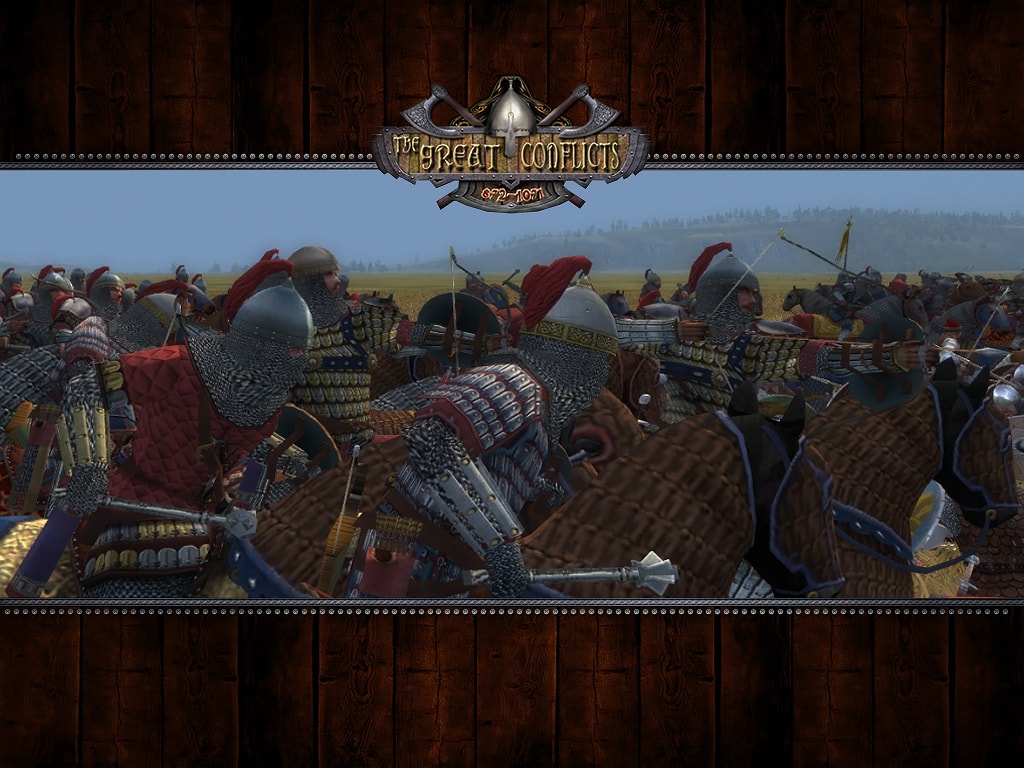
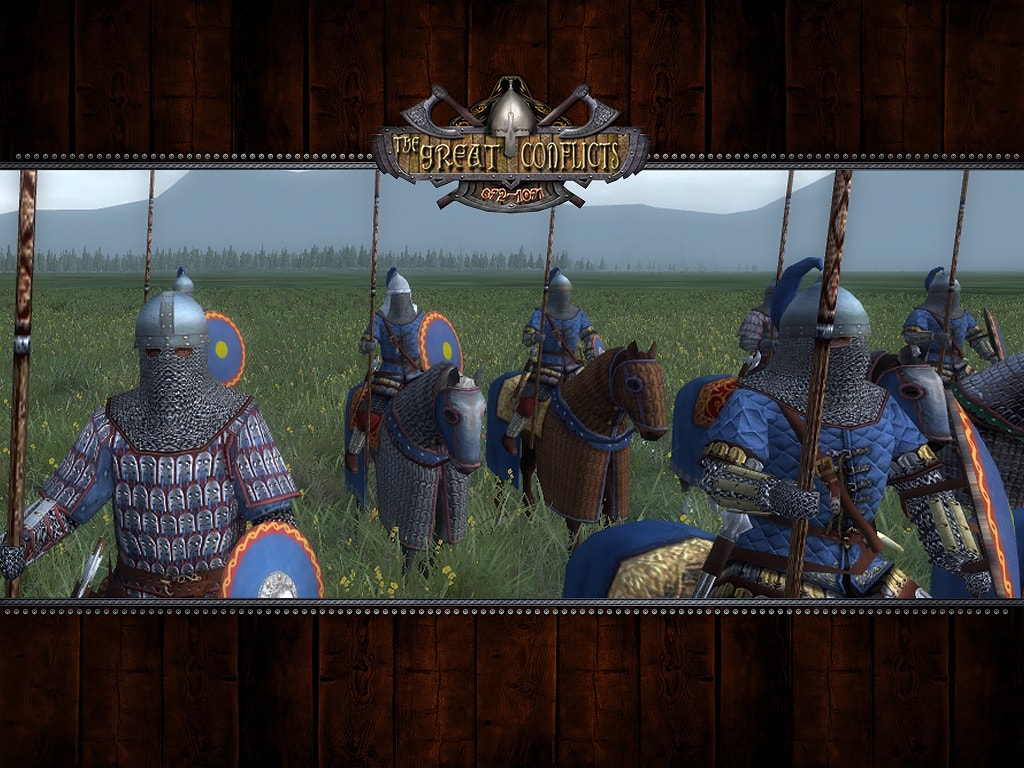

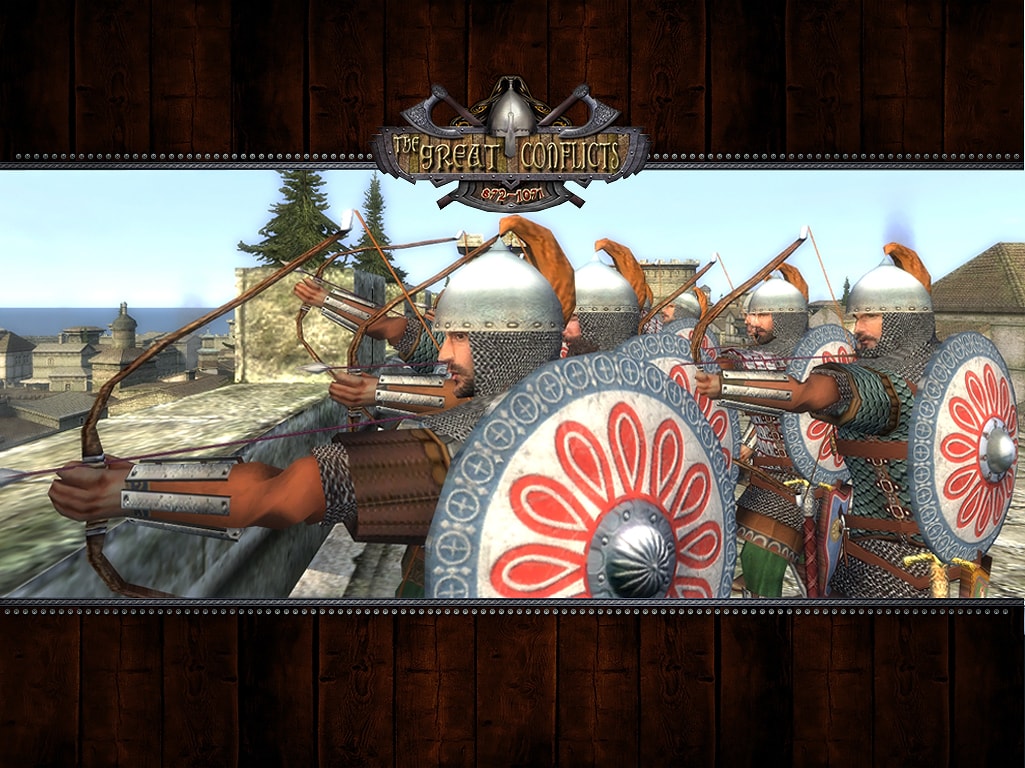
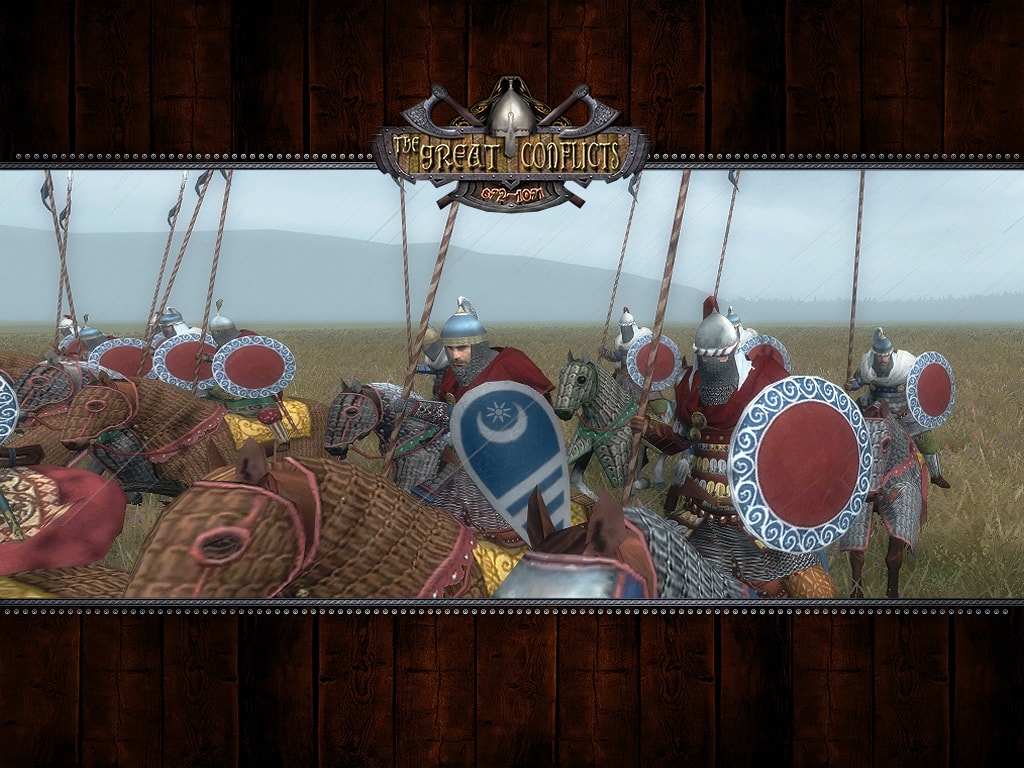
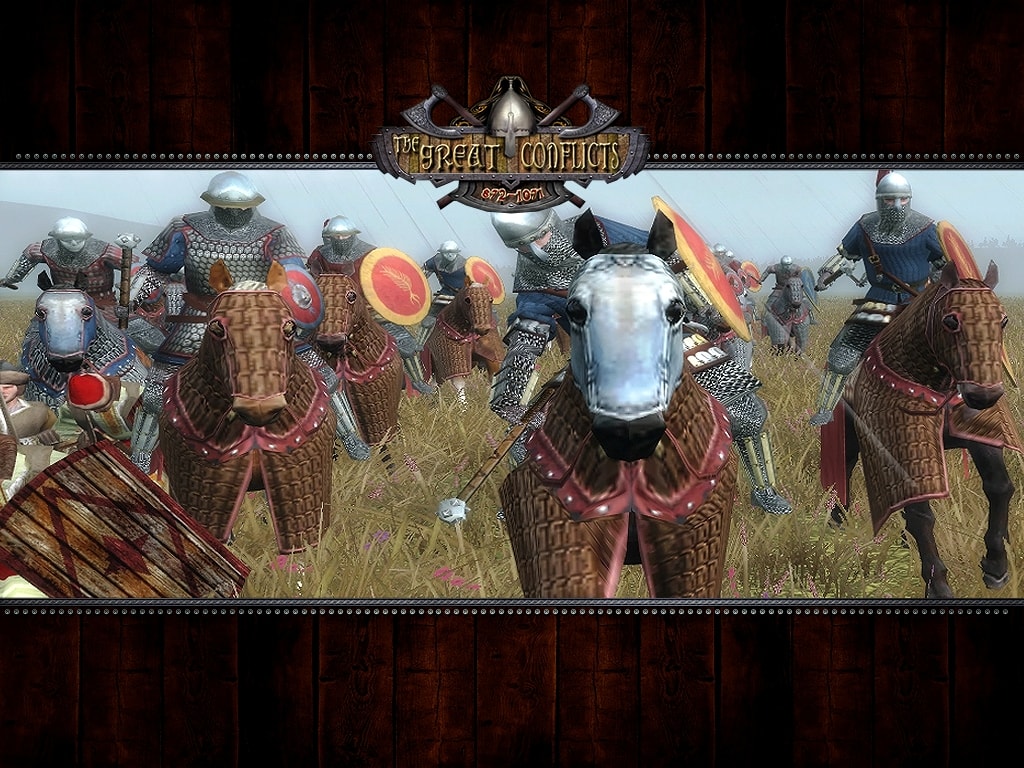
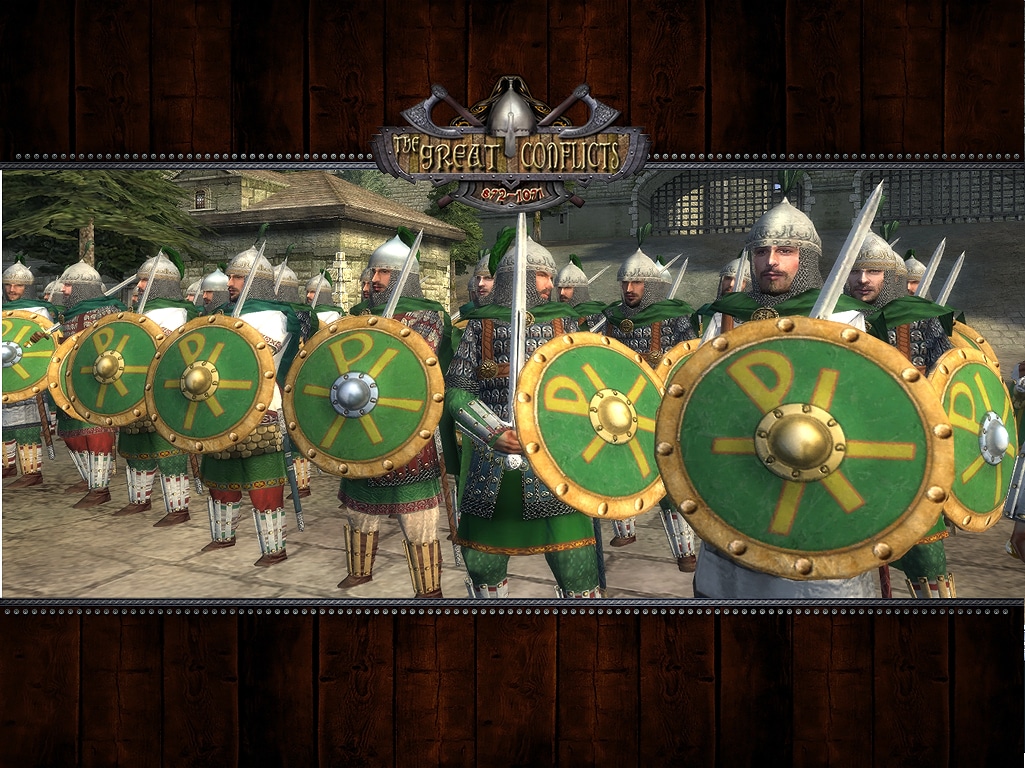
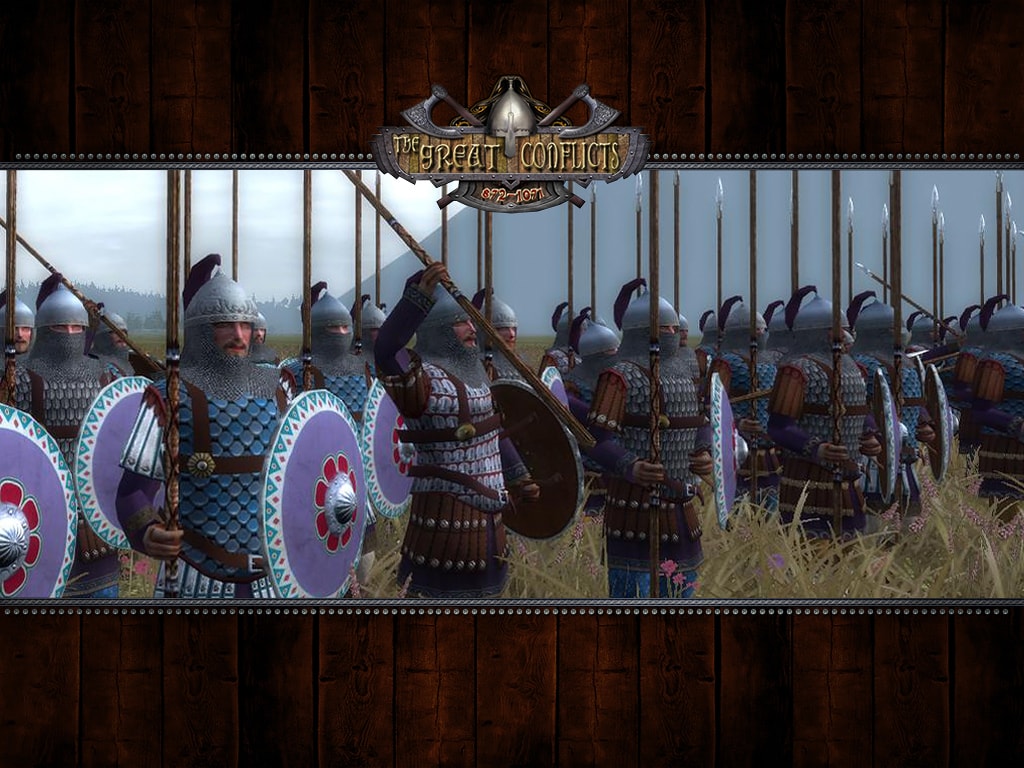
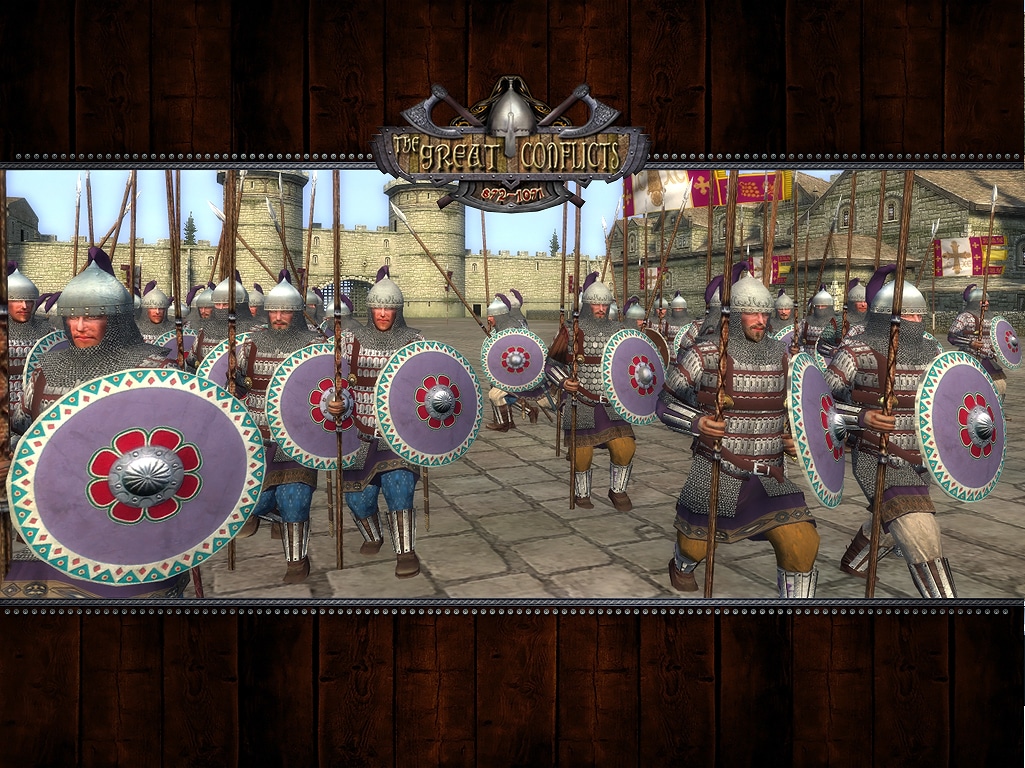
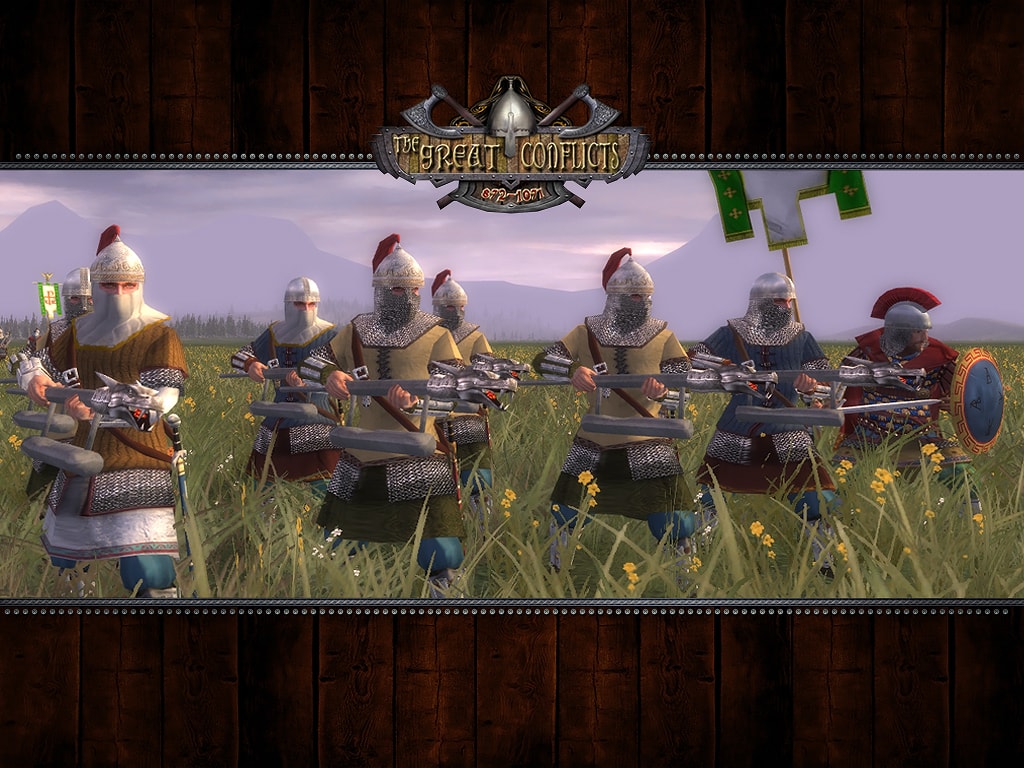
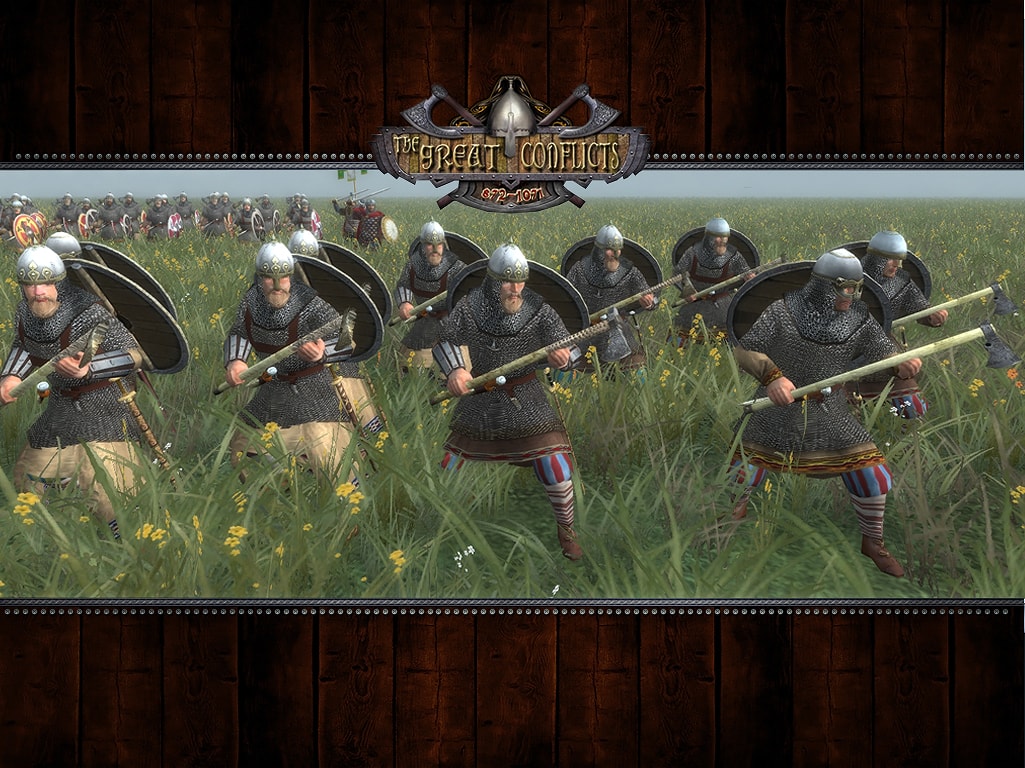
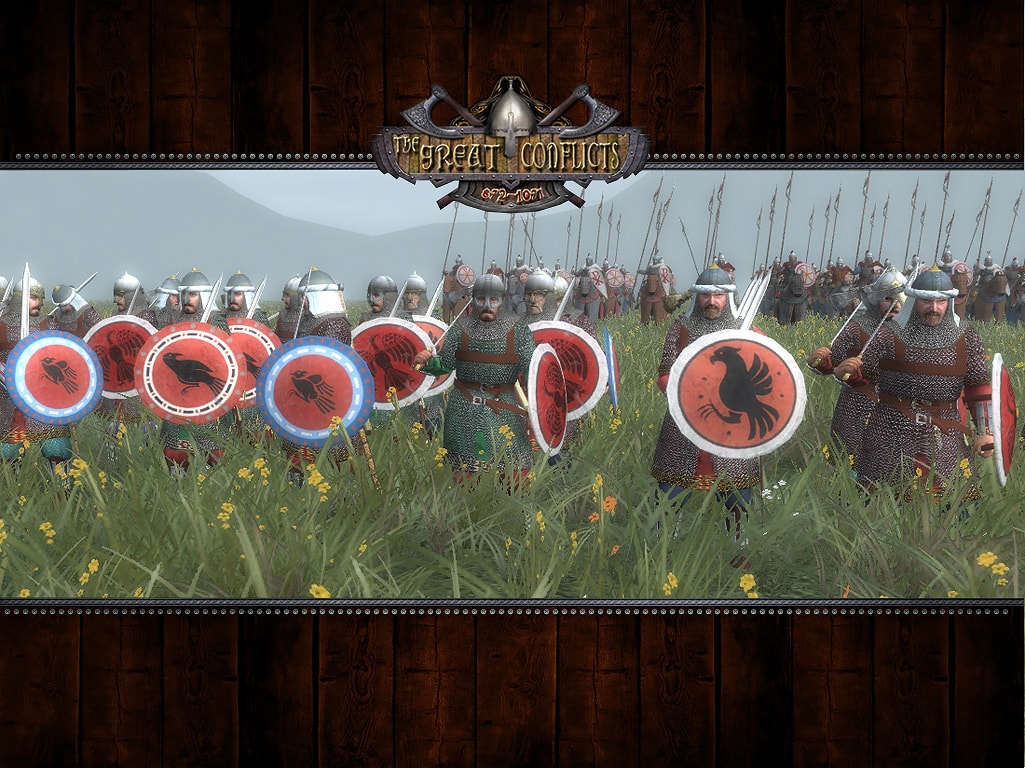



badass how they show the progress of being romananized.
As a lover of Roman History I cannot wait to play the campaign. The units looks gorgeous !
We are in an open beta 0.9.7 patch data inorder to allow players locate CTDs . Still the Islamic rosters are not finallised and Great Moravia, Serbia and Mercenaries require some unit entries.